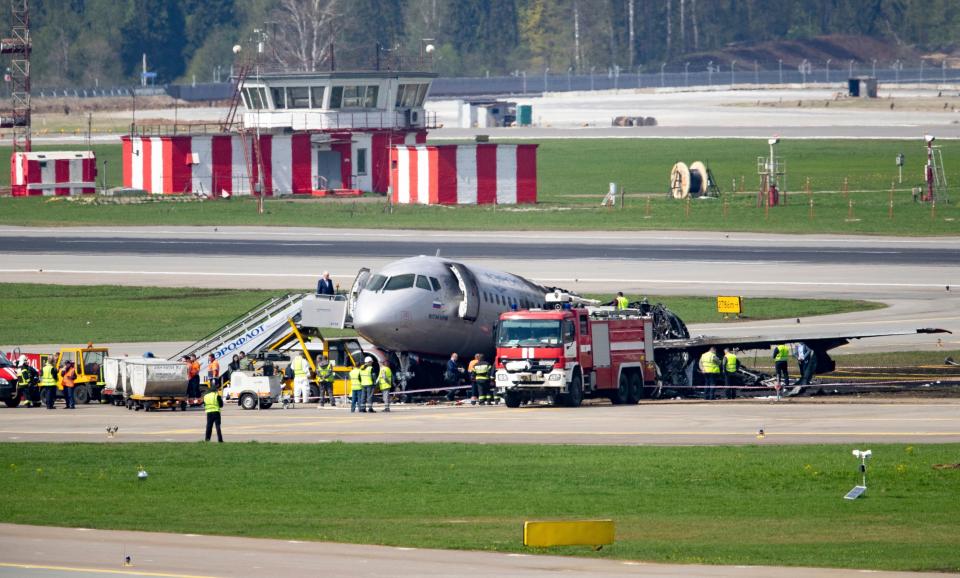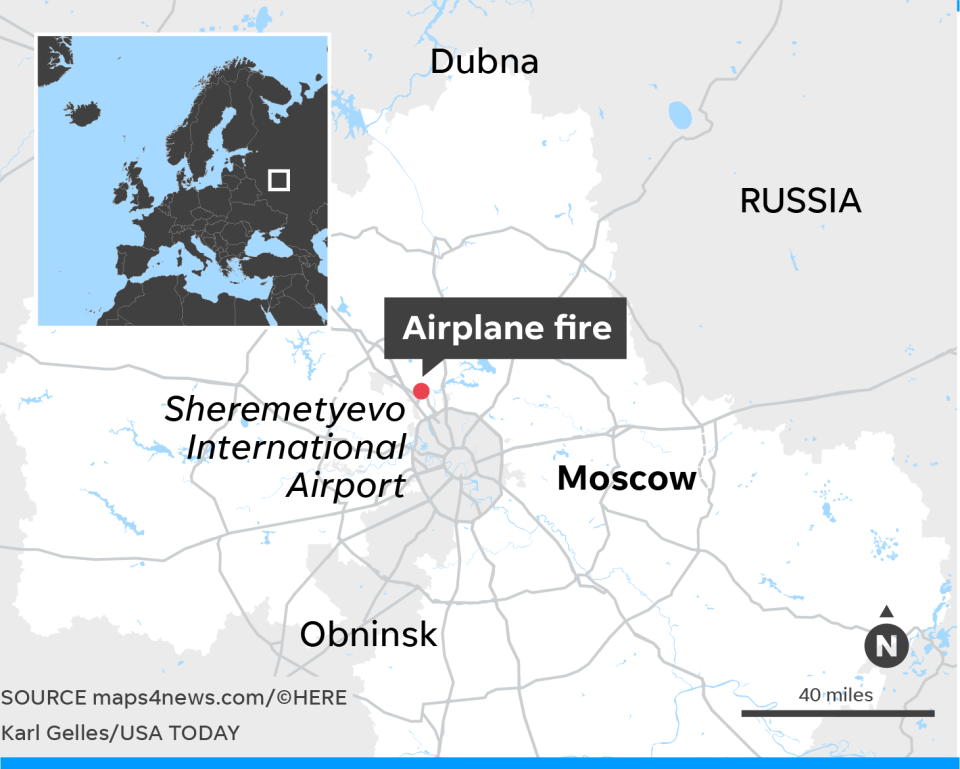Pilot cites lightning strike; American among dead in Moscow crash that killed 41
The Aeroflot captain who landed a fiery Superjet 100 in Moscow says a lightning strike and full fuel tanks may have prompted the inferno that killed 41 of the 78 people aboard.
A U.S. State Department official confirmed that one American died in the tragedy at Sheremetyevo Airport, Russia's busiest. Most of those who died suffered smoke inhalation and many had severe burns, Russian news agency Tass reported Monday.
Horrifying video from the scene shows the plane landing amid roaring flames with a trail of thick, black smoke. Moments later, passengers can be seen exiting from emergency slides, some staggering away from the plane with their carry-on bags.
Pilot Denis Evdokimov told Russian media there was a “a bright flash and a bang” moments before the crew began an emergency descent. He added that communications with air traffic controllers was hindered by the apparent lightning strike.
Evdokimov said the crew had no option but to perform a manual landing and managed to establish radio contact for "a couple of words” to air traffic control personnel who guided them back to the runway, the RT news agency reported.

The jet struck the runway several times, likely damaging the fuel tanks and causing a fire to ignite in the rear of the fuselage, the pilot said.
“The speed wasn’t high, it was normal according to the flight manual," Evdokimov said. But the jet was heavy with fuel, adding to the challenge of the landing, he added.
Aeroflot Flight SU1492 was scheduled to fly from Moscow to the northwestern Russian city of Murmansk but returned to the Moscow airport less than 30 minutes after takeoff.
Passenger Mikhail Savchenko, in a Facebook post, cited "huge grief for everyone who lost their family and loved ones." He said he survived with a few bruises.
"No, I didn't drag my suitcases," he said. "No, the moment I was filming, there were no people around me that I could help. But believe me, it's not much easier."
The fire was quickly extinguished, and passengers were able to exit the aircraft via the emergency exits, Aeroflot said in a statement. The airline said it was providing emergency assistance to survivors and was flying family members to Moscow free of charge.
"Aeroflot extends its deepest condolences to the family and loved ones of those who lost their lives," the statement said. "The crew did everything in its power to save passenger lives and provide emergency assistance to those involved. Tragically, they were unable to save all of those aboard."
The Russian Investigative Committee launched a criminal inquiry to determine whether any aircraft operation safety rules were violated. Such an investigation is standard in crashes that claim the lives of two or more people. Sukhoi said it was represented on the panel.
The company said the plane was produced in August 2017 and received scheduled maintenance about a month ago. Aeroflot said the pilot had 1,400 hours of experience flying the plane.
This is the second fatal accident involving a SSJ100. In 2012, a demonstration flight in Indonesia struck a mountain, killing all 45 aboard.

This article originally appeared on USA TODAY: Pilot cites lightning strike; American among dead in Moscow crash that killed 41

